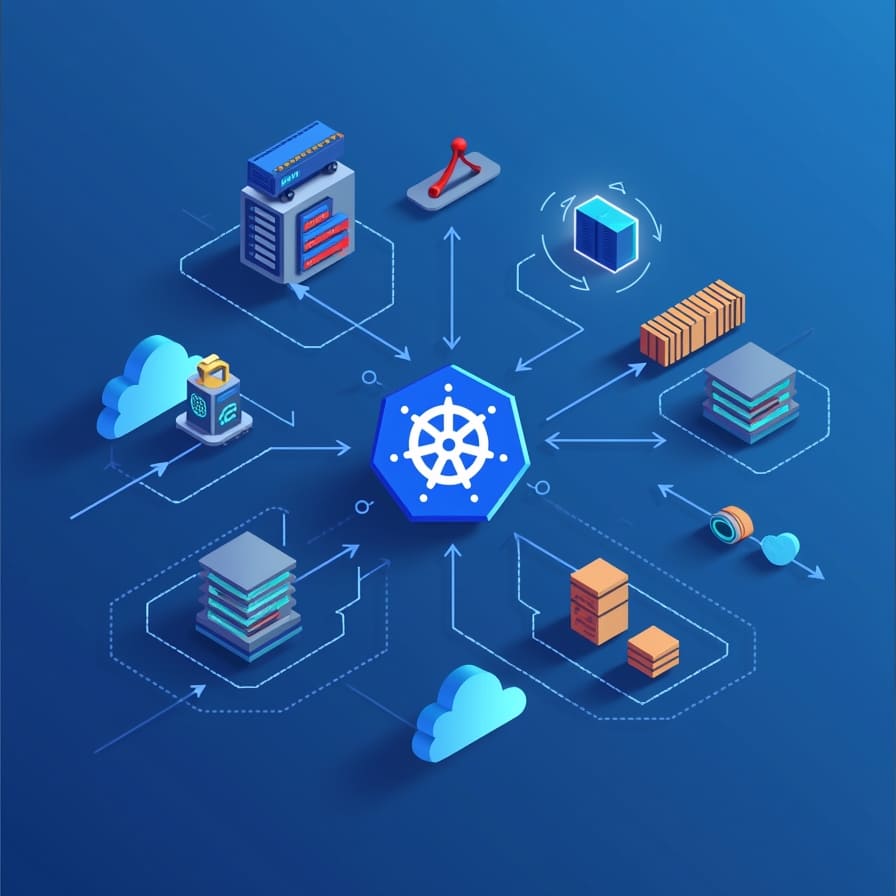How does Kubernetes manage rolling updates and rollbacks?

Kubernetes manages rolling updates and rollbacks through its deployment controller system, which automatically handles application updates whilst maintaining service availability. The platform uses deployment strategies to gradually replace old application instances with new ones, tracks revision history for easy rollbacks, and provides automated failure detection to revert to stable versions when issues occur.
Understanding Kubernetes deployment management
Kubernetes deployment management centres around the deployment controller, which acts as the orchestrator for your application lifecycle. This controller continuously monitors the desired state of your applications and ensures the actual state matches your specifications.
The deployment controller manages ReplicaSets, which in turn control individual pods. When you update your application, Kubernetes creates a new ReplicaSet for the updated version whilst maintaining the old one. This approach allows for seamless transitions between application versions without service interruption.
Deployment controllers track every change through revision history, storing previous configurations that enable quick rollbacks when needed. This versioning system maintains a complete audit trail of your application deployments, making it easy to identify when issues were introduced.
What are rolling updates in Kubernetes?
Rolling updates are Kubernetes' default deployment strategy that gradually replaces old application instances with new ones whilst maintaining service availability. This process ensures zero-downtime deployments by updating pods incrementally rather than all at once.
During a rolling update, Kubernetes creates new pods with the updated application version before terminating old ones. The system controls this process through two key parameters: maxUnavailable and maxSurge. These settings determine how many pods can be unavailable and how many extra pods can be created during the update process.
The rolling update process follows these steps:
- Creates a new ReplicaSet with the updated application version
- Scales up the new ReplicaSet whilst scaling down the old one
- Monitors pod health and readiness throughout the transition
- Completes the update when all old pods are replaced
How does Kubernetes perform rollbacks automatically?
Kubernetes performs rollbacks through its revision history system, which automatically tracks deployment changes and enables quick restoration to previous stable versions. The platform maintains a configurable number of previous ReplicaSets, allowing you to revert to any previous deployment state.
Automatic rollback capabilities include failure detection mechanisms that monitor deployment health. When Kubernetes detects that a deployment isn't progressing or pods are failing health checks, it can automatically trigger a rollback to the last known stable version.
The rollback process leverages the same deployment controller mechanisms used for updates. Kubernetes simply scales up the previous ReplicaSet whilst scaling down the problematic one, ensuring service continuity during the recovery process.
What deployment strategies does Kubernetes support?
Kubernetes supports multiple deployment strategies to accommodate different application requirements and business needs. Each strategy offers distinct advantages depending on your specific use case and risk tolerance.
| Strategy | Description | Best Use Case |
|---|---|---|
| Rolling Update | Gradual replacement of old pods with new ones | Standard applications requiring zero downtime |
| Recreate | Terminates all old pods before creating new ones | Applications that cannot run multiple versions simultaneously |
| Blue-Green | Maintains two identical environments, switching traffic between them | Critical applications requiring instant rollback capability |
| Canary | Gradually shifts traffic from old to new version | Testing new features with limited user exposure |
The choice of deployment strategy depends on factors such as application architecture, downtime tolerance, and testing requirements. Rolling updates work well for most scenarios, whilst blue-green deployments suit mission-critical applications that need immediate rollback capabilities.
How do you troubleshoot failed Kubernetes deployments?
Troubleshooting failed Kubernetes deployments involves systematic analysis of deployment status, pod logs, and rollout history. Start by checking the deployment status using kubectl commands to identify immediate issues.
The troubleshooting process follows these key steps:
- Check deployment status with `kubectl get deployments`
- Examine pod status using `kubectl get pods`
- Review pod logs with `kubectl logs [pod-name]`
- Analyse deployment events using `kubectl describe deployment [name]`
- Check rollout history with `kubectl rollout history deployment/[name]`
Common issues include image pull errors, resource constraints, configuration problems, and health check failures. Understanding these patterns helps you quickly identify and resolve deployment issues before they impact your applications.
Key takeaways for managing Kubernetes deployments
Successful Kubernetes deployment management requires understanding the platform's built-in capabilities and implementing proper monitoring and testing practices. Rolling updates provide reliable zero-downtime deployments for most applications, whilst rollback mechanisms ensure quick recovery from problematic releases.
Important best practices include thorough testing in staging environments, proper health check configuration, and monitoring deployment metrics. Container orchestration platforms benefit from robust cloud infrastructure that provides reliable compute resources and networking capabilities.
Effective update management combines Kubernetes' native features with comprehensive monitoring and alerting systems. This approach ensures your applications remain available and performant throughout the deployment lifecycle.
When implementing Kubernetes deployments, consider partnering with cloud infrastructure providers that offer managed services and expert support. We at Falconcloud provide the reliable infrastructure foundation needed for successful container orchestration, with global data centres and predictable billing that supports your Kubernetes environments.


